Employee development is becoming increasingly important to organizations wishing to retain top talent and gain the most from them. Effective employee development programs improve employee engagement, boost employee retention, and have a positive impact on overall business performance.
In this guide, we’re going to take a look at exactly what employee development is, how to incorporate it into organizations of all shapes and sizes, and how to reap the benefits of creating a learning culture that resonates with employees.
What is Employee Development and Why Does It Matter?
Employee development refers to the plans and pathways put in place to help employees assess their skills, learn new ones, and build on what they already know so they can offer more to their organization. These skill-building strategies may form part of a leadership development program or they may just be about maximising an individual’s potential within their current role.
Investing in employee growth with personal development plans creates a more skilled, engaged and loyal workforce. Employees feel empowered and that their employer values them as individuals and wants to help them grow.
The Business Case for Investing in Employee Development
Gallup found that organizations that focus on developing employees and have workplace training in place are 11% more profitable and are twice as likely to retain employees (and we all know how expensive recruitment can be).
Top talent is more likely to stray if they lack opportunities to grow and learn, especially if other organizations have enticing training on offer - 70% of employees would be ‘somewhat likely’ to leave their current job to work for an organization that invests in development and training. Therefore, offering and clearly promoting employee development leads to higher employee satisfaction, which has a knock-on effect on retention.
An individual employee's development can be aligned to company goals and growth too. If an organization wants to adopt new tools and approaches - perhaps they want to better understand generative AI, or want to in-house expensive agency work - then it can be cheaper and more effective to develop an existing employee than to recruit someone new who fits the bill. In this way, the employee gets the satisfaction of learning something new and appreciating the chance offered to them by the organization whilst the business itself grows its own potential productivity output.
Common Barriers to Effective Employee Development
Many HR teams want to implement employee development programs but they face barriers to doing so.
One of the most common problems faced by HR teams and leaders who want to improve workplace training is a lack of resources. This might be budgetary, it might be time and a lack of specialist knowledge to seek out and create the program in the first place.
It can also be hard to progress with creating a learning culture when leaders haven’t bought-in to the idea or don’t prioritize employee development. Leaders may feel these schemes don’t align with the organization’s wider goals, but they should be shown that employee development can be tailored to fit the needs of the business and future-proof it against change and competition.
Building a Learning Culture: The Foundation of Employee Development
The first step towards getting employee development programs in place is to foster a culture of learning within the organization. Employees should be encouraged to learn and innovate and not remain static or content with the status quo. Employees who are keen to learn will adapt well to evolving business challenges and be more resilient.
Steps to Create a Learning Culture in Your Organization
Here are a few easy steps you can take to create a learning culture in your organization:
Gain leadership support: Start with the MDs and C-Suite and trickle down, ensuring all managers champion employee growth and make their reports aware of the opportunities available to them through learning new skills.
Promote continuous learning: Shift from one-off training once or twice a year to ongoing opportunities. This can be done via workshops, learning lunches with employees, or online training platforms that employees can access at any time.
Offer flexible learning options: Implement tools that accommodate different learning styles - some learn best through reading whereas others like the chance to listen to an expert and ask questions. Ensure these options are offered to everyone so they can choose what best suits them.
Encourage mentorship and peer learning: Set up a formal mentorship scheme, ask for mentor volunteers from your senior team, and encourage peers working within similar roles to teach their colleagues about how they work.
Recognize and reward learning efforts: This is especially important when it comes to continuous personal development, as rewards offer motivation for putting time into developing new skills. Recognition of this dedication boosts employee morale and provides impetus to continue learning and developing.
How a Strong Learning Culture Benefits Businesses and Teams
Developing a culture of continuous learning is an excellent way to future-proof your organization against any potential challenges and changes in the marketplace. It drives innovation as employees have access to new ideas and ways of thinking which they can take with them as they advance through the organization.
Development tailored towards growing your leadership can help HR teams create well-rounded leaders and address any existing gaps to ensure strength at the top. As these leaders will have benefitted from the learning culture and development opportunities they’ll be great advocates for its continuation too.
Retention rates for companies with strong learning cultures are up to 30 - 50% higher than those without, which shows just how much these opportunities mean to employees and how a strong learning culture can reduce turnover and save on recruitment costs.
Effective Workplace Training Strategies That Drive Results
We shouldn’t rely on employees to take full responsibility when it comes to development. For optimal results that align with business goals, we need to take a structured approach and implement thought-out workplace training programs. These might include:
Key Types of Workplace Training Programs
- On-the-Job Training: Real-time mentoring and hands-on learning - employees may shadow existing experts or book in time to access facilities where they can get hands-on and practice with new tools and approaches.
- E-Learning Platforms: Scalable, self-paced content for individuals and teams. Progress can be monitored by managers, to ensure employees are taking advantage of the opportunities offered to them, and are following appropriate content that will help them with any skills gaps or advancement requirements.
- Workshops and Seminars: Collaborative, interactive learning opportunities - these can be led by subject matter experts in-house or we might seek someone with expertize to come in and lead a workshop for a chosen team.
- Leadership Development Programs: Preparing future leaders to succeed by acknowledging all the skills needed to lead well and providing training and development tailored to these requirements. We also need to identify the right candidates for these programs and get buy-in from them so we’re not wasting our time and resources.
- Cross-Training: Broadening skills to improve organizational agility by presenting opportunities to learn things about different sectors, roles and industries. This can help employees innovate and tackle challenges with some lateral thinking.
5 Steps to Designing a Successful Training Program
Identify skill gaps through assessments and feedback - these may be self-reported or involve some form of 360-degree feedback from colleagues and managers.
Align training goals with broader business needs - start by outlining the business needs and grow from there, finding suitable candidates to align with each requirement.
Select effective training tools and formats - these choices may be constrained by time and budget but we should always research the best available options.
Implement clear timelines and measurable outcomes - motivate employees with a deadline and what they can expect to get out of putting their time into the training.
Track results and refine based on feedback - monitor the performance of those who have undergone training to assess efficacy and change the approach if outcomes don’t match expectations.
Implementing Skill-Building Strategies for Your Workforce
Take action and start implementing skill-building strategies today by:
Identifying and Prioritizing Skill Gaps
The most effective way to identify and prioritize skill gaps is to make use of psychometric tools and surveys, alongside gathering manager feedback on pinpointed areas for growth.
Psychometric assessments outline existing strengths which inform the skill areas that someone may do well in. The workplace personality and emotional intelligence elements of these assessments can also help identify those suitable for leadership roles and what they need to work on to become effective leaders.
Personalizing Development Plans for Individual Growth
Employee development plans shouldn’t be dictated to employees - they’re personal development plans and as such they should match employee aspirations as well as role and company requirements. No one will be motivated to learn about something they aren’t personally invested in so we risk wasting time and money if we don’t take personal preferences into account.
Once a personal development plan has been outlined, managers should regularly check in on progress and address any challenges that come up.
Leveraging Technology to Enhance Skill Development
Technology is our friend when it comes to skill development. Learning Management Systems (LMS) allow employees to personalize their learning and give managers access to real-time analytics so they can see the progress their team is making.
There’s a growing trend for AI tools in development too. AI tools learn from and adapt to how an employee learns and assess what they already know, so more tailored content can be presented to them. This streamlines the learning process, letting employees upskill faster and more robustly.
Measuring the Success of Your Employee Development Program
It’s vital to monitor the results of development programs to ensure a good ROI and make changes if the program isn’t looking as effective as it should be.
There are a few key metrics we can track that will quickly give us an idea of just how effective the program is:
Key Metrics to Track Employee Development ROI
- Retention rates of high-performing employees
- Post-training productivity improvements
- Employee satisfaction and engagement scores
- Internal promotions and reduced external hiring costs
Gathering and Acting on Employee Feedback
Employee feedback is another important way to understand whether or not our employee development strategies are working. Feedback to managers as well as company-wide pulse surveys are a useful way to gather both quantitative and qualitative data on workplace training. We should conduct these at regular intervals throughout the year so we can make data-driven adjustments to improve training effectiveness and ensure we’re meeting employee expectations.
Concluding Thoughts: Employee Development as a Competitive Advantage
Employee development is a cornerstone of long-term organizational success. It boosts morale and engagement, helps fill skills gaps, and shapes those who will go on to lead the business in future, all while supporting employee retention efforts.
HR leaders should take ownership of this work. They should be aware of the existing tools in the market, of their employee opinions on the development already available, of what their competitors are doing, and work to foster a learning culture in the business.
Final Steps to Take Action on Employee Development
To get employee development right, you should:
- Audit your current programs for opportunities and gaps - how long have these programs existed? Are they outdated? Do they meet business needs?
- Secure leadership buy-in to prioritize development strategies - are your leaders championing learning? Do they understand its impact on engagement and retention?
- Explore tools, frameworks, and assessments that align with organizational goals - from Learning Management Systems to psychometric assessments, there are so many tools available to support with employee development.
You can turn to Thomas for support too. We’re experts in tailoring coaching and helping you understand every one of your employees, their skill gaps, and their potential with our science-backed psychometric assessment suite.
Get in touch with one of our experts today and we’ll help you plan a data-driven and effective approach to employee development.




